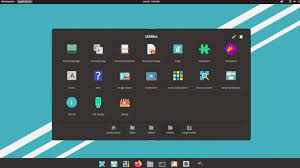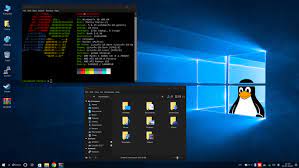Unlocking Efficiency: Embracing Open Source Document Management
The Power of Open Source Document Management
In today’s digital age, the management of documents and information is crucial for businesses and organisations to operate efficiently. Open source document management systems offer a cost-effective and flexible solution that empowers users to organise, store, and retrieve documents with ease.
Benefits of Open Source Document Management Systems
**Cost-Effective:** Open source document management systems are often free to use or come at a lower cost compared to proprietary solutions, making them accessible to businesses of all sizes.
**Customisation:** With open source software, users have the freedom to modify and customise the system according to their specific requirements, ensuring a tailored solution that fits their workflow.
**Community Support:** Open source projects benefit from a large community of developers and users who contribute to the improvement and development of the software, providing valuable support and resources.
**Security:** Many open source document management systems are known for their robust security features, allowing users to control access permissions, encryption, and data protection.
Popular Open Source Document Management Systems
- OpenKM: A comprehensive document management system with features such as version control, workflow automation, and collaboration tools.
- LogicalDOC: An intuitive platform that offers document indexing, search capabilities, and integration with other business applications.
- Nuxeo: A scalable enterprise content management system that supports digital asset management and business process automation.
- Alfresco: A versatile platform for managing documents, records, and content across an organisation with advanced search functionalities.
- Dokmee: A user-friendly document management solution that provides secure file storage, retrieval options, and mobile access for on-the-go productivity.
The Future of Document Management
As businesses continue to embrace digital transformation, open source document management systems will play a vital role in streamlining processes, enhancing collaboration, and ensuring data security. By harnessing the power of open source technology, organisations can unlock new possibilities for managing information effectively in an increasingly digital world.
Top 7 Benefits of Open Source Document Management for Modern Businesses
- Cost-effective solution for businesses of all sizes.
- Customisable to fit specific workflow and requirements.
- Community support from developers and users for continuous improvement.
- Robust security features to control access permissions and data protection.
- Flexible integration with other business applications.
- Scalable to accommodate growing document management needs.
- Enhanced collaboration through shared document repositories.
Challenges of Open Source Document Management: Key Cons to Consider
- Limited Vendor Support
- Complex Implementation
- Integration Challenges
- Security Concerns
- Lack of User-Friendly Interface
- Scalability Limitations
Cost-effective solution for businesses of all sizes.
Open source document management systems offer a cost-effective solution for businesses of all sizes, making them accessible to organisations with varying budgets. By utilising open source software, businesses can significantly reduce their expenses on document management tools while still benefiting from robust features and functionalities. This affordability allows small businesses and startups to implement efficient document management systems without incurring high licensing fees, enabling them to allocate resources to other critical areas of their operations. Additionally, larger enterprises can scale their document management solutions cost-effectively as their needs evolve, ensuring that cost efficiency remains a key advantage throughout the growth of the organisation.
Customisable to fit specific workflow and requirements.
One of the key advantages of open source document management systems is their inherent customisability, allowing users to tailor the software to meet their specific workflow and requirements. This flexibility empowers businesses and organisations to adapt the document management system to align with their unique processes and preferences, ultimately enhancing efficiency and productivity. By being able to customise the system, users can create a bespoke solution that addresses their individual needs, ensuring a seamless integration into existing workflows and maximising the utility of the software.
Community support from developers and users for continuous improvement.
One significant advantage of open source document management systems is the strong community support from developers and users, which fosters continuous improvement and innovation. With a collaborative environment where individuals can contribute their expertise, suggest enhancements, and troubleshoot issues, these systems evolve rapidly to meet the changing needs of users. This collective effort ensures that open source document management solutions remain dynamic, reliable, and up-to-date with the latest technological advancements, ultimately benefiting the entire user community.
Robust security features to control access permissions and data protection.
Open source document management systems offer robust security features that empower users to control access permissions and ensure data protection. By allowing users to set granular access controls, these systems enable organisations to safeguard sensitive information and prevent unauthorised access. Additionally, features such as encryption, audit trails, and user authentication enhance the overall security posture of the system, providing a secure environment for storing and managing documents with confidence.
Flexible integration with other business applications.
One of the key advantages of open source document management systems is their flexibility in integrating with other business applications. This feature allows seamless collaboration and data sharing between different software tools, enhancing productivity and streamlining workflows within an organisation. By enabling easy integration with various business applications, open source document management systems empower users to create a cohesive digital ecosystem that optimises efficiency and maximises the value of their software investments.
Scalable to accommodate growing document management needs.
One of the key advantages of open source document management systems is their scalability, allowing businesses to easily expand and adapt to growing document management needs. As the volume of documents and information increases over time, open source solutions can be seamlessly scaled up to accommodate larger storage requirements, additional users, and more complex workflows. This flexibility ensures that organisations can efficiently manage their expanding document repositories without the constraints of traditional proprietary software licenses or limitations.
Enhanced collaboration through shared document repositories.
One notable advantage of open source document management systems is the facilitation of enhanced collaboration through shared document repositories. By providing a centralised platform for storing and accessing documents, team members can easily collaborate in real-time, share feedback, and work on projects collectively. This feature promotes transparency, efficiency, and seamless communication within organisations, ultimately leading to improved productivity and teamwork across different departments and remote locations.
Limited Vendor Support
An inherent drawback of open source document management systems is the limited vendor support they offer. Unlike proprietary solutions that come with dedicated vendor assistance, open source platforms may lack immediate technical support, resulting in potential delays in addressing and resolving issues. Users relying on open source document management systems may encounter challenges in obtaining timely assistance for troubleshooting or customisation needs, which can impact operational efficiency and productivity.
Complex Implementation
One significant drawback of open source document management systems is the complexity of implementation. Setting up and configuring these systems can be a challenging and time-consuming process, often demanding technical expertise for successful deployment. Users may encounter hurdles in integrating the software into their existing infrastructure, customising it to suit their specific needs, and ensuring seamless operation across different platforms. The intricate nature of implementation can pose a barrier for organisations without dedicated IT resources or personnel with the necessary skills, potentially leading to delays and complications in adopting open source document management solutions.
Integration Challenges
Integration Challenges are a significant con of open source document management systems. Compatibility issues often surface when attempting to integrate these systems with pre-existing software or databases. This can result in the need for extra development work to bridge the gaps between different platforms, potentially causing delays and added complexities in the implementation process. Overcoming these integration challenges requires careful planning and expertise to ensure seamless interoperability between open source document management systems and other essential tools within an organisation’s workflow.
Security Concerns
Security Concerns: Despite the presence of robust security features in many open source document management systems, one significant con is the potential risk of vulnerabilities being exploited if regular updates and patches are not applied promptly. Failure to stay current with updates could leave systems exposed to security breaches and cyber threats, highlighting the importance of proactive maintenance and vigilance in ensuring the security of sensitive documents and information within open source environments.
Lack of User-Friendly Interface
One significant drawback of certain open source document management systems is the lack of a user-friendly interface. In some cases, these systems may feature interfaces that are not as intuitive or visually polished as their commercial counterparts, which can hinder user adoption and efficiency. Users accustomed to sleek and user-friendly interfaces may find it challenging to navigate and utilise the functionalities of open source document management systems that lack a polished interface, potentially leading to frustration and decreased productivity within an organisation.
Scalability Limitations
Scalability Limitations can be a significant con of open source document management systems. As the volume of documents and users increases, some open source platforms may struggle to maintain optimal performance and scalability. This limitation can hinder the system’s ability to handle a large amount of data efficiently, leading to potential bottlenecks and decreased productivity. Addressing scalability issues may require additional resources and expertise to ensure that the document management system can grow seamlessly with the evolving needs of the organisation.





